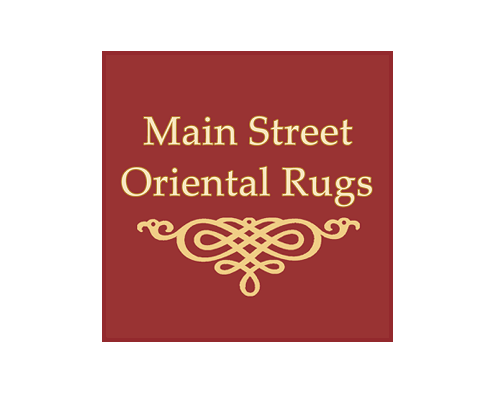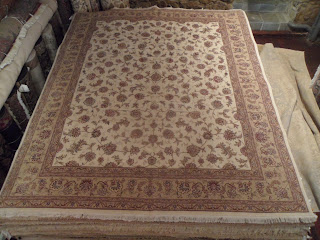Two new rugs that Main Street Oriental Rugs just received are a Turkish Heriz Design rug and a Persian Heriz Design rug. These two rugs are both handmade and of very high quality. Heriz is a major weaving center of both contemporary Iran and 18
th century Persia. The term Heriz refers to about 30 villages within a 30-mile radius of the city of Tabriz. The city of Tabriz is located in the far northwest region of Iran, which borders Turkey and the Caucasus region, which was taken over by Russia early in the 20
th century. Before this happened, however, the Caucasus was part of the Persian Empire. Heriz rugs are “the country cousins” of the Tabriz, for although they follow many designs of the latter, they are modified in a way typically their own.
Turkish Heriz
The angularity of the lines and motifs in Heriz rugs distinguish them from the rugs of the neighboring Tabriz. Heriz design rugs favor geometric and tribal designs. Heriz rug weavers often draw inspiration from flowers leaves and other floral objects, but do to the style of weaving, namely the heavily angular lines, there is sometimes little resemblance to these objects that the motifs represent (Source:
http://nazmiyalantiquerugs.com/articles/history-of-herizserapi-rugs/).
Persian Heriz
One difference between these two Heriz rugs is the weave. The Persian Heriz has a tighter weave, compared to the Turkish Heriz, which has a looser weave. The finer the weave, the more knots per square inch on the rug. The more knots per square inch means that more work went into the rug. Therefore, this tighter weave causes the value of the Persian Heriz to be higher than that of the Turkish Heriz. The more knots per square inch your rugs have, the higher in value it will be.










